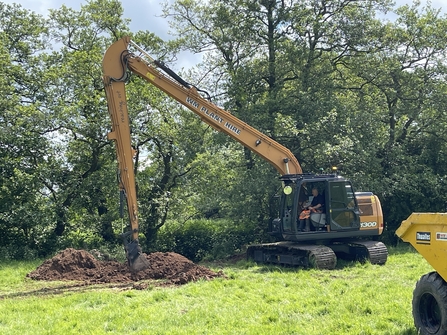Corfield farm is a family-run mixed livestock farm, the family have a deep connection to the river and remember playing there and catching fish. The new generation would like to see a return of improved fish stocks and be able to take their children to enjoy the River Corve, which winds its way across their land.
This site was a designated Wildlife Site, but in the early 1990’s the river was dredged to deepen the channel and drain the wet meadows and improve the land for agriculture. At this point the wildlife site designation was lost. Dredging and over-deepening the channel disconnected the river from its floodplain and resulted in a free flowing, over-deep channel with no pools and natural river features, which led to there being poor marginal vegetation.


